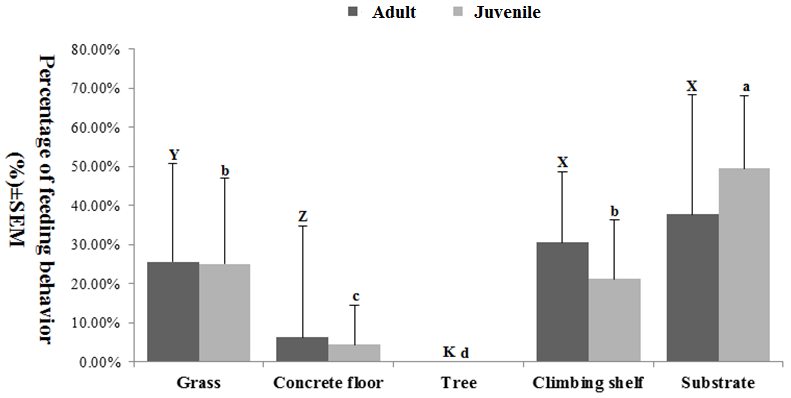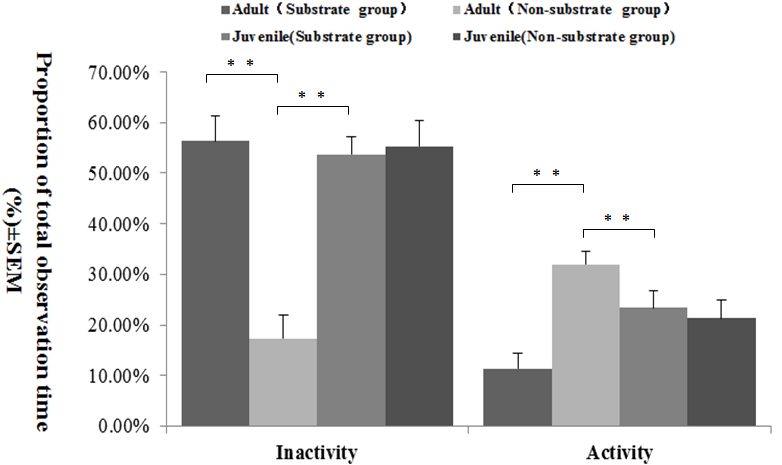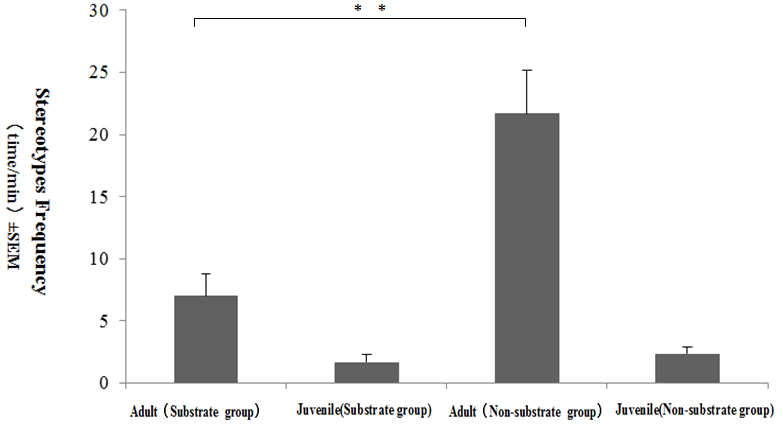Effects of Pinus koraiensis Bark Substrate on the Behavioural Responses of Captive Giant Pandas
Effects of Pinus koraiensis Bark Substrate on the Behavioural Responses of Captive Giant Pandas
Ming-Yue Zhang*, Bo Yuan, Xiao-Hui Zhang, James Ayalaand Rong Hou*
Feeding time distribution of adult and juvenile captive giant pandas in different locations. a, b, c, d: Different superscripts indicate significant differences in the feeding times of adult giant pandas between different locations (p<0.01). X, Y, Z, K: Different superscripts indicate significant differences in the feeding times of juvenile giant pandas between different locations (p<0.01). The data are presented as the mean ± SEM.
Effects of laying substrate on the state behaviors of adult and juvenile captive giant pandas. The data are presented as the mean ± SEM; * p<0.05; ** p<0.01.
Event behavioral performance distribution of adult and juvenile captive giant pandas in different locations. a, b, c, d: Different superscripts indicate significant differences in expressing event behaviors of adult giant pandas between different locations (p<0.01). X, Y, Z: Different superscripts indicate significant differences in expressing event behaviours of juvenile giant pandas between different locations (p<0.01). α, β, γ, δ, ε: Different superscripts indicate significant differences in expressing event behaviors of juvenile giant pandas between different locations (p<0.01). The data are presented as the mean ± SEM; * p<0.05; ** p<0.01.
Effects of laying substrate on the playing behavior of juvenile giant pandas. The data are presented as the mean ± SEM; * p<0.05; ** p<0.01.
Effects of laying substrate on the stereotypic behavior of adult and juvenile giant pandas. The data are presented as the mean ± SEM; * p<0.05; ** p<0.01.















